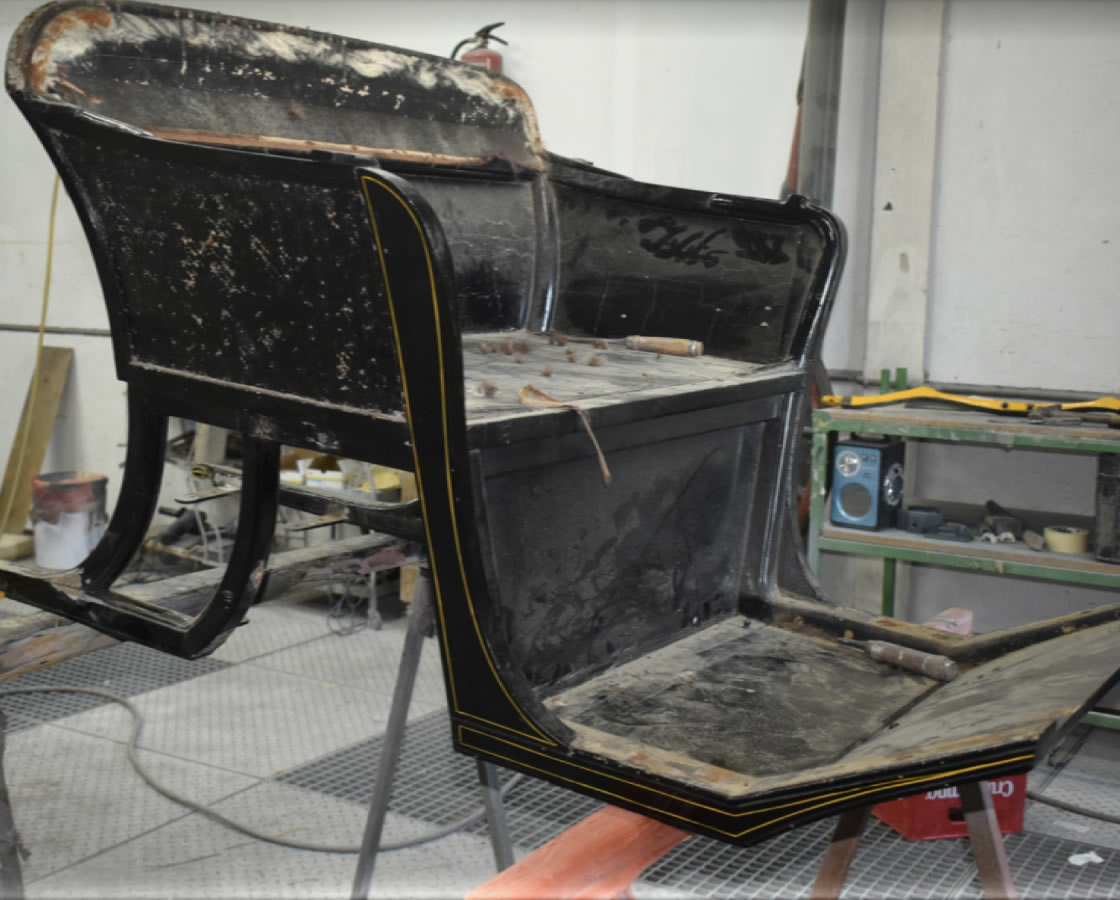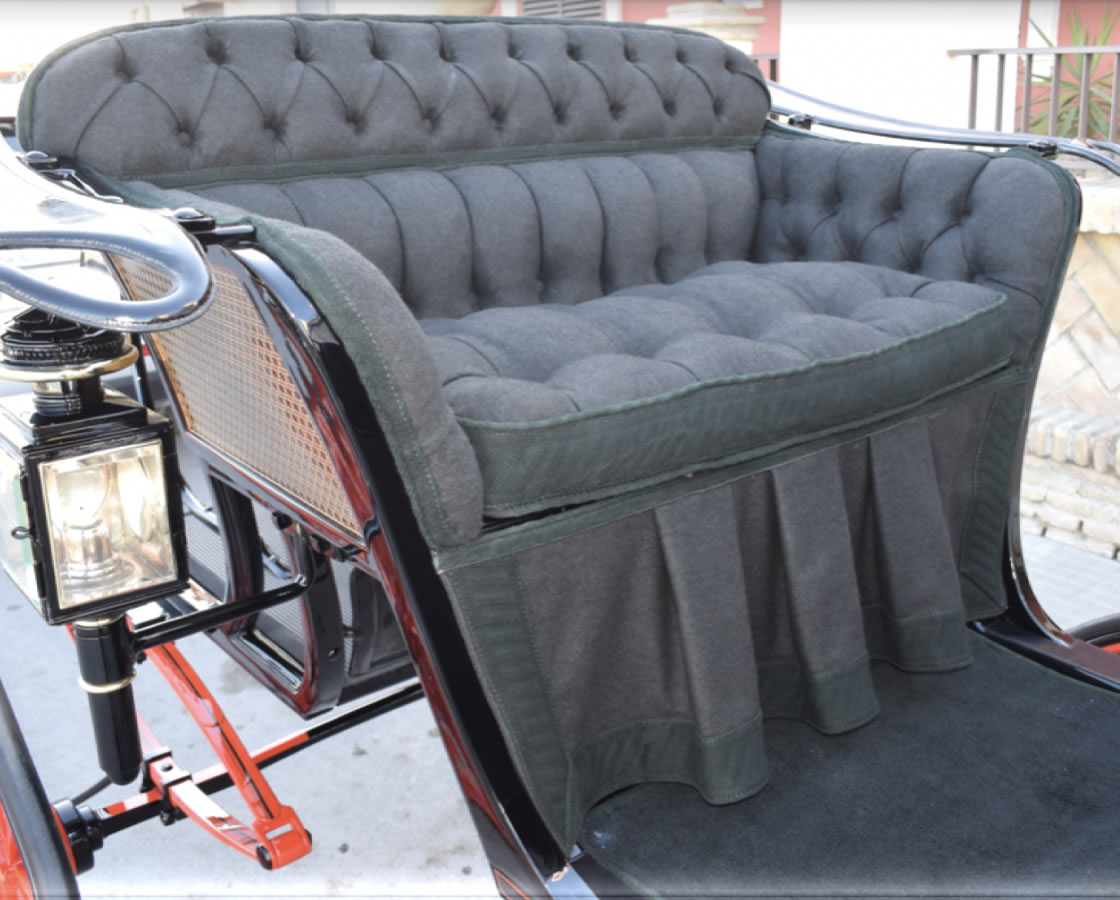This carriage was created by J.A. Lawton in the 19th century in Liverpool (England). The restoration has been made by handmade processes in Carruajes Romero.
Description and historial introduction

The Spider Phaeton is one of the most elegant of the great family of phaetons. Its name is received because the main seat is placed on air supports with a pulpit for a single footman on light iron rods. Frequently it is equipped with a folding hood covering only the main seat. It can be attached to the trunk, but for its lightness it is normal to see it in lemongrass.
It was built by Joseph Alfred Lawton, originally from West Derby, in his carriage-building company in Liverpool, founded in 1870.
Conservation state and diagnosis
After the due studies of historical research together with the physical methods of image examination that allowed us to conclude that the piece was in an unfortunate state of preservation with a significant deterioration of the wicker grilles in the seat basket and high levels of oxidation and deformity very noticeable in the pulpitillo.
The entire paint surface is very damaged by the passage of time with faults in the pictorial layer that leave the hardware visible. The wood is highly affected by xylophagous insects with cracks and breaks that compromise the integrity of the piece, especially highlighting the openings of assemblies of the pines and hubs on the wheels.
A fragility of the fabric of the seat cloth is seen as a result of oxidation and wear due to its use with almost complete fraying of the seams of the seams of the seats.
Restoration project
The process has begun with the transfer of the carriage to the conservation-restoration workshops of Carruajes Romero, where, after a first eye inspection, a detailed study of the carriage has been carried out, including sample analysis and photographic reproduction using techniques of natural, flush and ultraviolet light, compared with the corresponding historical and technical study.
Among the different works carried out and after the corresponding cleaning, disinsection and consolidation of the wood, we highlight the cutting of the embalming to remove edging, the complete replacement of the wicker of the seat basket, the replacement of the pines in bad condition with new ones in ash wood for large accumulation of carcomas.
Capitoné upholstery buttoning the same green cloth textile with seat trim and skirts of the same textile fabric and adorned with aggregates of the same color.
Painted:
- Black box with red filleting.
- Red wheels with black filleting.
- Basses in red with green filleting.
- Protective layer finish.









